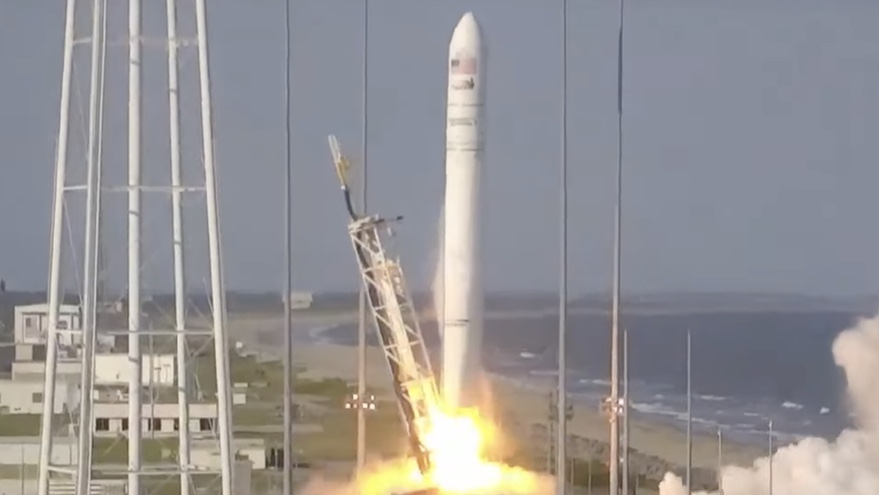WASHINGTON — A Northrop Grumman Antares rocket launched a Cygnus cargo spacecraft Aug. 10 carrying more than 3,700 kilograms of cargo for the International Space Station.
The Antares 230+ rocket lifted off from Pad 0A at the Mid Atlantic Regional Spaceport at Wallops Island, Virginia, at 6:01 p.m. Eastern. The launch took place at the end of a five-minute window because of a helium valve issue discovered during the countdown.
The NG-16 Cygnus spacecraft is scheduled to arrive at the ISS early Aug. 12, with capture by the station’s Canadarm2 robotic arm expected at approximately 6:10 a.m. Eastern. The arm will berth the spacecraft to the station’s Unity module.
The Cygnus spacecraft, named S.S. Ellison Onizuka after the late astronaut killed on the shuttle Challenger in 1986, is carrying 3,723 kilograms of cargo. That cargo includes supplies for the station’s crew as well as hardware for the station, such as equipment to support continued upgrades of the station’s solar panels.
Science investigations make up more than 1,000 kilograms of cargo on the Cygnus. One of those payloads is an experiment by Redwire to test the use of simulated lunar regolith as a feedstock for a 3-D printer on the station, a technology that could be used in future lunar exploration. A Stanford University experiment will examine the growth of muscle cells in microgravity to see if such cells can be used for testing drugs to halt a muscle loss condition known as sarcopenia.
Also on the Cygnus is an infrared camera called a Prototype Infrared Payload, or PIRPL, developed by Northrop Grumman for the Missile Defense Agency and Space Development Agency. Those organizations will use PIRPL to test technologies on future missile tracking satellites.
At an Aug. 9 prelaunch briefing, Frank DeMauro, vice president and general manager of tactical space systems at Northrop Grumman, said data from PIRPL will also be used by government agencies and universities “studying environmental impacts” from volcanic eruptions and forest fires.
Nauka investigation just starting
NASA approved plans to launch the Cygnus at an Aug. 9 launch readiness review that also confirmed that the ISS was ready to accept the cargo spacecraft, a week and a half after the station temporarily lost attitude control when thrusters on the new Russian Nauka module fired three hours after docking.
NASA has said little about the July 29 incident since a media call a few hours afterwards. Dmitry Rogozin, head of Roscosmos, has said in Russian media that “problems related to guidance system algorithms” caused the erroneous thruster firing.
At the Aug. 9 prelaunch briefing, Joel Montalbano, NASA ISS program manager, said the investigation into the incident was just getting started, and offered no timeline for completing it. “The Russians are in the process of defining how they’re going to move forward with this commission,” he said. “We have a team that I’ve put together on the U.S. side that will do a similar thing.”
He added that he expected to have a better idea of the schedule for completing that investigation in the next two to three weeks. In the meantime, he said flight controllers and others in the space station program at NASA are in regular communications with their Russian counterparts.
